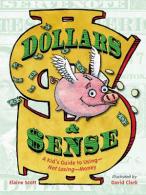 A Ramadan Booklist and Guide for Educators
A Ramadan Booklist and Guide for Educators
A Ramadan booklist and guide for educators just in time …. Ramadan is here, and all over the USA and world, Muslim students are preparing to fast. And very often, educators and librarians play such an important and valuable role in helping these students feel comfortable and more confident in following their faith and belonging.
Read on for more information about Ramadan … plus, we have a Ramadan booklist at the very end of this post.
Ramadan by the Calendar
In 2023, Ramadan started around March 23, and the reason I use the word around is because it actually depends on where you are in the world.
Since Ramadan is based on the lunar calendar, it moves backwards every year around 11 days, and is confirmed based on the sighting of the crescent moon in the night sky. Some Muslim communities use NASA calculations to determine when Ramadan is long before the month starts, and many wait for the moon to show in the sky- which could mean different starting days around the world, and even sometimes in the same city according to different Masjid (Mosque) leadership.
This has always been humorously nicknamed “the moon wars” by Muslims, due to the passionate debates on if the moon was sighted or not, and I have come now as an adult to appreciate the vast diversity of the Muslim community all over the world, and actually find it a lovable fun mystery of every year.
Ramadan Schedules
The holy month of fasting for Muslims all over the world means a change in daily schedules, and for many children aged 7-9, it might even be their first year attempting the fast.
Fasting in Ramadan means no food or drink (yes, not even water!) being consumed from dawn until sunset. So for many middle-grade students, that means waking up earlier with their families to eat suhoor or the pre-dawn meal. After a short prayer, kids go back to sleep, but this interruption might cause more sleepiness during the school day, and a need for a nap after school. Fasting continues all day until sunset, and families gather after for Iftar, a meal to break the fast.
Ramadan schedules also include a lot of extra time for doing good deeds and praying, and there are special night prayers done at the Masjid each night called Taraweeh. Many Muslim students and kids also go to these prayers, and so their sleep schedules might be a little delayed due to this as well.
Lack of eating or drinking also means not eating lunch at school (although some students may decide to break their fast at this time, which is completely okay! It depends on each kid and their comfort level).
Fasting might make it difficult for many to be in the cafeteria at this time. So where do most students go? (Where did I go as a young kid?)

The Library as a Safe Haven
As a young Muslim American, school libraries were truly my safe haven. I spent my fasting days between book shelves, passing the time by flying away on another middle grade adventure. Librarians have always looked out for me, and been there to make sure that I find the perfect middle grade book to enjoy.
Another cool library use- a place to pray!
Muslims pray five times a day- dawn, noon, afternoon, sunset, and a night prayer. These prayers are standing rituals, with bowing and prostrating, specific motions and words recited, with a Muslim focusing completely on their prayer. Many use prayer rugs to help keep the place they put their heads down on clean from any dust.
I often found the area between bookshelves the perfect place for me to pray my noon prayer, and the books really felt like the perfect quiet supportive company. The librarians were truly the coolest, always being very careful to make sure no one disturbed me while praying.
Allies
So how can non-Muslim allies help Muslim students who are fasting during this month?
Ramadan lasts around 29 to 30 days (again based on the sighting of the crescent moon to signal the ending of the lunar month), and so students might find themselves in need of extra compassion and support, especially as the days go by.
Books, libraries, librarians, and educators play an important role in helping students with finding a safe haven to stay during lunch, as well as providing an understanding and supportive place these students can depend on.
A Ramadan Boooklist
Get those awesome middle grade book recs ready, (maybe even some Muslim middle grade options-linked below) and most of all, please make sure to completely be supportive. Muslim students often just want to feel like they belong, and being an ally goes a long way in helping them feel proud and confident in their faith.
For a school Ramadan educator guide, check out:
And a super fun Muslim Middle grade list by Muslim authors to help Ramadan students pass the time:
ONCE UPON A EID by Aisha Saeed and SK Ali
NURA AND THE IMMORTAL PALACE by M.T, Khan
AHMED AZIZ EPIC YEAR by Nina Hamza
WORLD IN BETWEEN by Kenan Trebincevic
A PLACE AT THE TABLE by Sadie Faruqi
BHA FOR NOW by Maleeha Siddiqui
OTHER WORDS FOR HOME by Jasmine Warga
((For more, check out this archived Melissa Roske interview with Muslim author Hena Khan))
Thank you so much librarians and educators!













